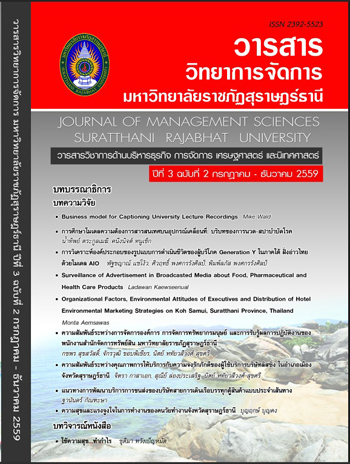โมเดลธุรกิจสำหรับคำบรรยายการบันทึกการสอนในมหาวิทยาลัย
Main Article Content
Abstract
Deaf and Hard of Hearing people can benefit from captioning of video recordings and transcription of audio recordings and guidelines (e.g. Web Content Accessibility Guidelines (WCAG 2.0)) or legislation in many countries has been drafted to encourage or require organisations to caption and transcribe their recordings. Captioning and transcription by qualified and trained professionals is expensive and not affordable in many countries and situations (e.g. University Lectures). Captions and transcriptions can also be of great benefit to non-native speakers or when there is a high level of background noise or there is no audio available (e.g. TV screens in public places such as airports) and also allow video and audio recordings to be searched. Professional captioning is expensive and crowdsourcing may reduce the costs but requires comparisons to verify the accuracy of the work and so as the number of crowdsourced captioners is increased to increase accuracy, the cost is also increased. Automatic Speech Recognition can be used to automatically caption and transcribe recordings but requires human correction of errors. This paper compares captioning methods and costs and suggests an affordable model might be to use students to correct automatic speech recognition errors of their lecture recordings.


